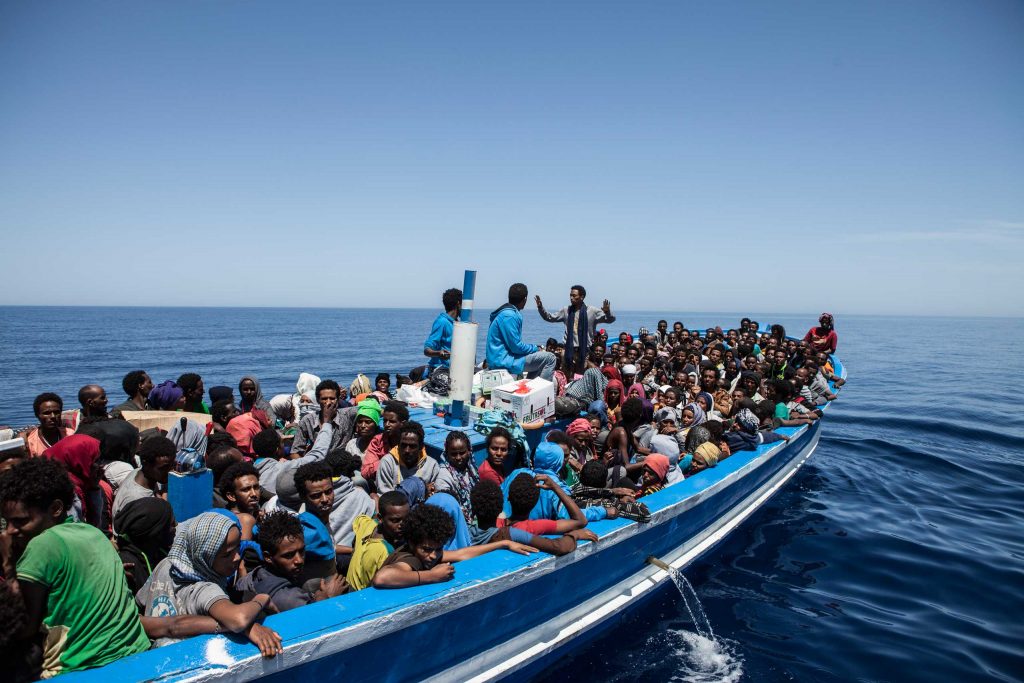By Akanimo Sampson
Deaths recorded by the International Organisation for Migration (IOM), a United Nations agency on the three main Mediterranean Sea routes through almost seven months of 2019 are at 859 individuals. This, according to the agency represents about 55 per cent of the 1,558 deaths confirmed during a similar period in 2018.
It said Mediterranean Sea deaths this year account for exactly 50 per cent of all global deaths recorded of migrants in transit by its Missing Migrants Project (MMP). Most of the Mediterranean deaths – nearly 600 in almost eight months – have been recorded on the Central Mediterranean route, where another 15 individuals were reported dead this past week.
An Ethiopian man recovered in Maltese waters last Tuesday reported that he was the sole survivor of a boat of 15 people. He reported that his fellow travellers had slowly succumbed to the elements and a lack of food and water and that their bodies were lost before their boat was rescued.
A Libyan Coast Guard unit also recovered the body of an unidentified man during a large-scale rescue operation the previous Saturday. Several of the 278 survivors reported that another man remains missing and is presumed to be lost at sea.
IOM however, reports that 45,505 migrants and refugees have entered Europe by sea through August 13, roughly a 30 per cent decrease from the 64,836 arriving during a similar period last year.
Arrivals this year to Greece and Spain are at 23,193 and 14,680, respectively, (37,873 combined) accounting for about 83 per cent of the regional total, with the balance arriving in much smaller numbers to Italy, Malta and Cyprus. Arrivals to Greece are running ahead of 2018’s totals from this time. Arrivals to Spain are lower.
2019 is the sixth year of IOM’s efforts to systematically record deaths on migration routes worldwide through its Missing Migrants Project. Since the beginning of 2014, the project has recorded the deaths of 32,669 individuals, including 1,709 in 2019 as of 22 August (see chart below).
Due to the challenges of collecting information about these people and the contexts of their deaths, the true number of lives lost during migration is likely much higher. Missing Migrants Project records should only be viewed as indicative of the risks associated with migration, rather than representative of the true number of deaths across time or geography.
The number of migrant deaths recorded in the Americas overall in 2019 is now 518, compared to 397 recorded at the same point in 2018, an increase of 30 per cent.
On the US-Mexico border, IOM recorded four deaths within 24 hours this past week starting Monday (August 19). All were also within the same general area.
On Monday, the body of an unidentified man was found in the Rio Bravo/Grande near El Saucito, not far from the city Piedras Negras, Mexico. In the early hours of the next day, a young woman and her three-year-old daughter were witnessed being swept away while attempting to cross the river at Piedras Negras.
A search for the two was yet to discover their ultimate whereabouts. Later that same day, the body of a man who was presumed to have drowned was found on a ranch also near El Saucito.
In another unusual coincidence two van accidents on the opposite sides of the Asian continent claimed the lives of 15 migrants within two days: on Sunday, 10 Laotian migrants – including six women and four men – died in a crash in Thailand while travelling in a van to the border region of the country.
On Monday, five Syrians were killed also while travelling in a van in Turkey, including three adult men, a 45-year-old woman and a 15-year-old boy. Two other Turkish men were killed in the accident while 11 of the van’s passengers survived.
Missing Migrants Project data are compiled by IOM staff based at its Global Migration Data Analysis Centre but come from a variety of sources, some of which are unofficial. To learn more about how data on migrants’ deaths and disappearances are collected.
The report Fatal Journey Volume 4, published June 28, includes an overview of five years of Missing Migrants Project data (2014-2018) and an update on what is known about deaths during migration in 2019.

